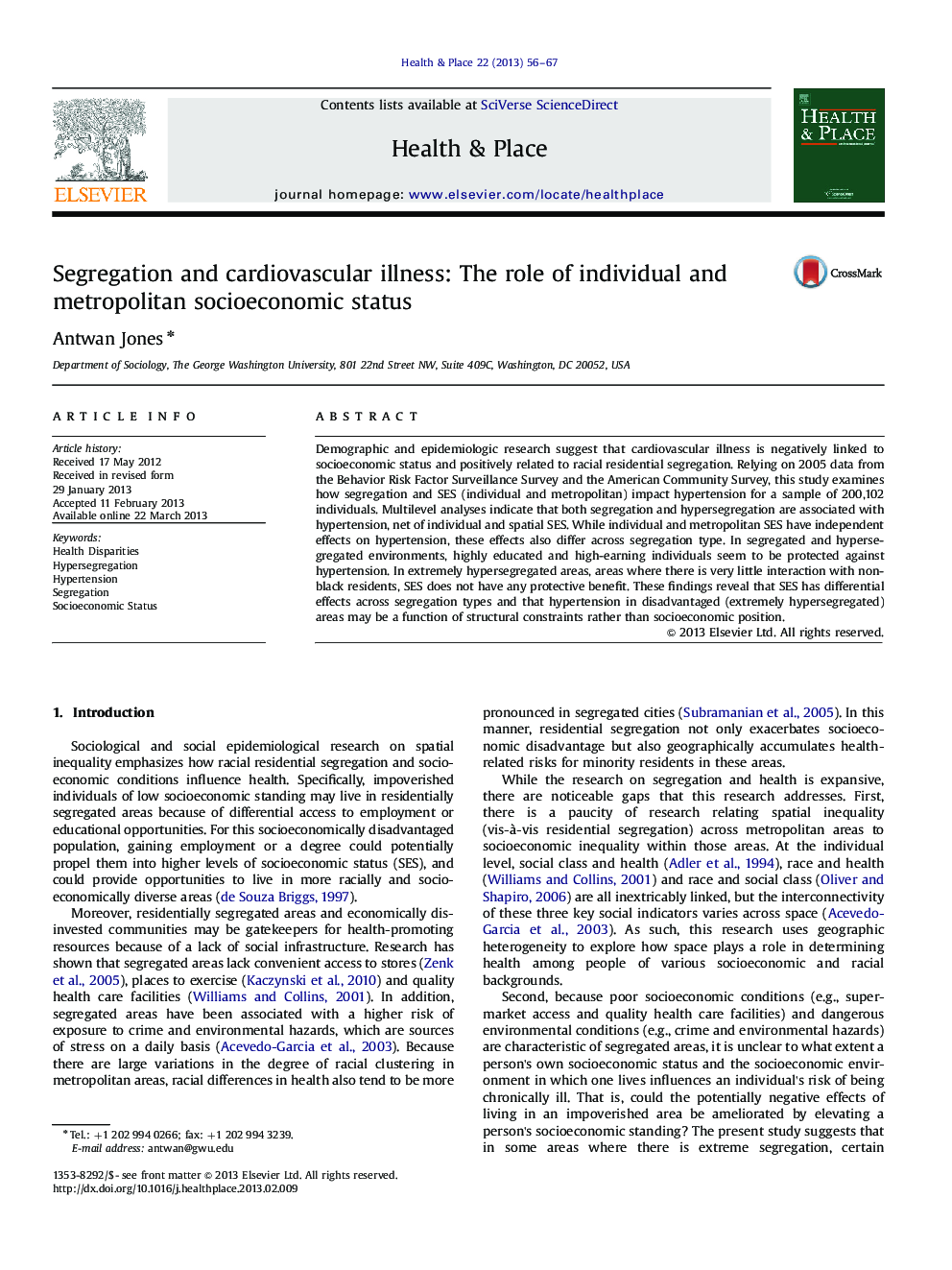| Article ID | Journal | Published Year | Pages | File Type |
|---|---|---|---|---|
| 7459129 | Health & Place | 2013 | 12 Pages |
Abstract
Demographic and epidemiologic research suggest that cardiovascular illness is negatively linked to socioeconomic status and positively related to racial residential segregation. Relying on 2005 data from the Behavior Risk Factor Surveillance Survey and the American Community Survey, this study examines how segregation and SES (individual and metropolitan) impact hypertension for a sample of 200,102 individuals. Multilevel analyses indicate that both segregation and hypersegregation are associated with hypertension, net of individual and spatial SES. While individual and metropolitan SES have independent effects on hypertension, these effects also differ across segregation type. In segregated and hypersegregated environments, highly educated and high-earning individuals seem to be protected against hypertension. In extremely hypersegregated areas, areas where there is very little interaction with non-black residents, SES does not have any protective benefit. These findings reveal that SES has differential effects across segregation types and that hypertension in disadvantaged (extremely hypersegregated) areas may be a function of structural constraints rather than socioeconomic position.
Related Topics
Health Sciences
Medicine and Dentistry
Public Health and Health Policy
Authors
Antwan Jones,
